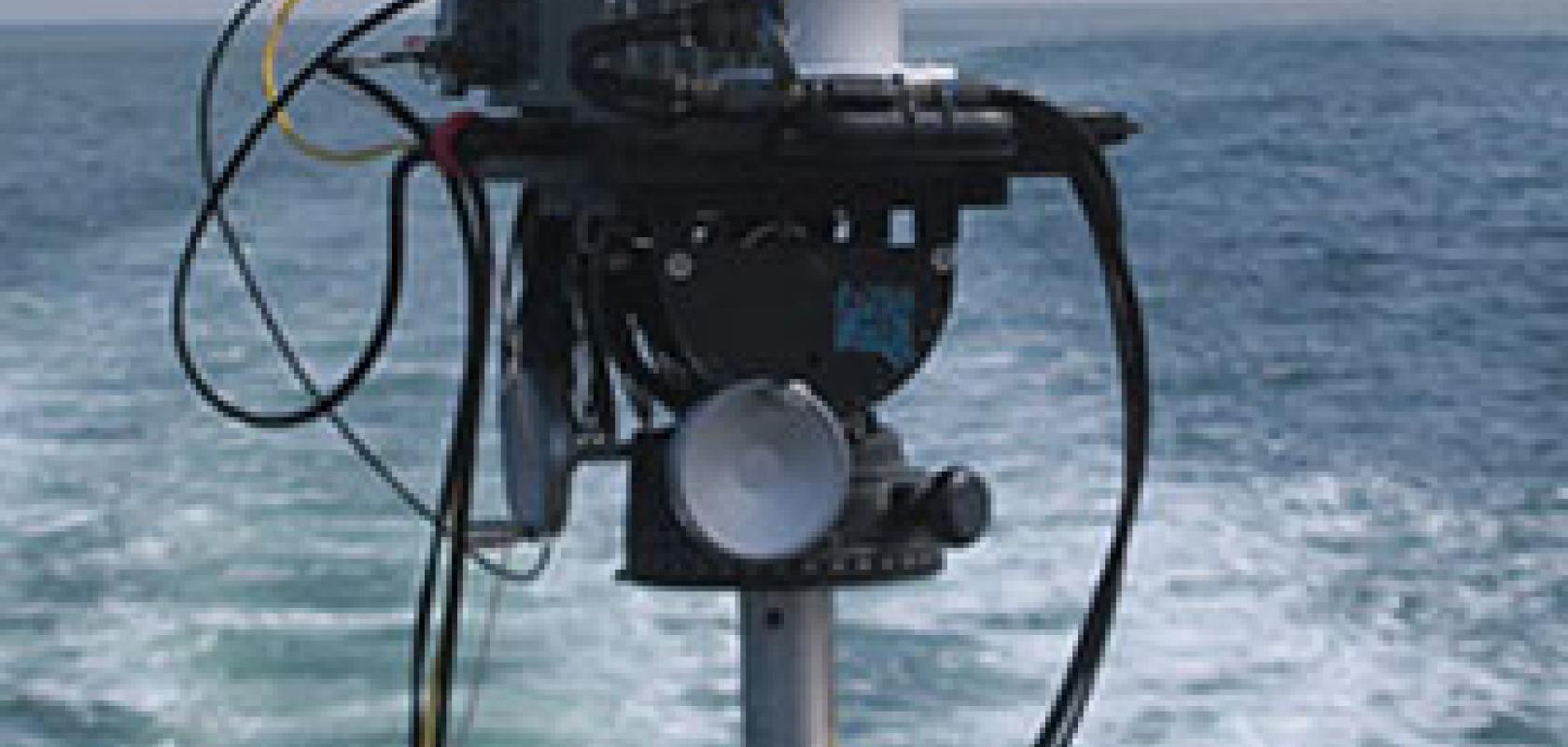Johns Hopkins University reports that a team of engineers from the Applied Physics Laboratory (APL) has successfully demonstrated a high-bandwidth, free-space optical (FSO) communications system between two moving ships, proving that FSO technology can operate in maritime conditions. The Lab demonstrated its latest compact form factor system during the 2017 Trident Warrior Exercise, an annual event where sailors try out the latest innovations in naval warfare systems.
“We demonstrated bandwidths that were several orders of magnitude higher than all current radio frequency [RF] communications capability on Navy vessels, and at longer ranges than previously demonstrated FSO technology for maritime applications,” said Juan Juarez, the technical lead for the team developing the technology.
The FSO system is designed to provide communication in situations where radio transmission isn’t available or desirable. “Naval platforms increasingly need to operate effectively in reduced-RF or emission control conditions while maintaining their tactical advantage and situational awareness,” Juarez explained.
Commercial FSO systems exist but typically don’t address defence needs, he added, “specifically in terms of system mobility, link range, and data rate while operating in the highly scintillated terrestrial environment, especially close to the water.”
FSO demonstration systems previously built for terrestrial defence applications have been too large, or lacked the mobility, data rates, or ranges to be practical on naval platforms. APL’s system overcomes many of these challenges, the organisation says.
The first week of testing was ship-to-shore, from the motor vessel Merlin off the coast of Naval Base Point Loma, San Diego, to the 3rd Fleet Headquarters parking lot. The team achieved more than 14 hours of link-up time, even in four- to six-foot high seas, making repeatable, semiautomatic link reacquisitions over the entire line-of-sight range. Error free data transport at 1–2Gb/s was achieved at ranges greater than 25km; voice communications was possible over more than 35km; and chat messaging out to 45km, the maximum available line of sight.
“Weather conditions during the two weeks of testing were typical of San Diego’s ‘June Gloom’ and gave the APL team plenty of opportunities to show that our FSO technology can operate even through some levels of fog and haze,” Juarez said. “While the fog layer was present, links of over 10km were achieved, even though visibility at times was reduced to 2–3km.”
Also during that first week, Vice Admiral Nora Tyson, commander of U.S. 3rd Fleet, visited the land-based testing site and was briefed by the ship-based team over the optical link – the first time a three-star admiral held a video teleconference over an optical link.
During the second week of testing, a second set of hardware was installed on board the Sea Hunter, an autonomous continuous trail unmanned vessel (ACTUV) that was temporarily manned by a six-person crew in addition to the APL test team for the demonstration.
Multiple links between the two ships were achieved in swells of up to five feet, over 10km in range, with Sea Hunter going 24 knots and Merlin doing 12 knots in a ‘V’ formation that allowed the ships to quickly separate from one another, while maintaining the links at varying speeds and motions.
“Despite seas that had both ships rolling with the swells, the link stayed solid,” Juarez said. The FSO equipment experienced significant sea spray, and the omnipresent San Diego marine fog made it challenging to maintain the ship-to-ship linkages. Nonetheless, first-time data rates as high as 7.5Gb/s were achieved over a link between two vessels.
APL says the compact, mobile FSO demonstration system is the culmination of more than a decade of work in the field of free-space optics. APL previously led the highly successful DARPA Free Space Optical Experimental Network Experiment (FOENEX) to field-test high-bandwidth communications systems, integrating FSO and radio frequency technology in a mesh airborne network.
“After FOENEX we decided to invest in the development of a system to prove that a compact, free-space optics system could operate in the highly challenging naval environment,” Juarez said. “As APL proved in Trident Warrior 2017, FSO technology is finally a viable, non-RF communication technology for U.S. Navy platforms.”


